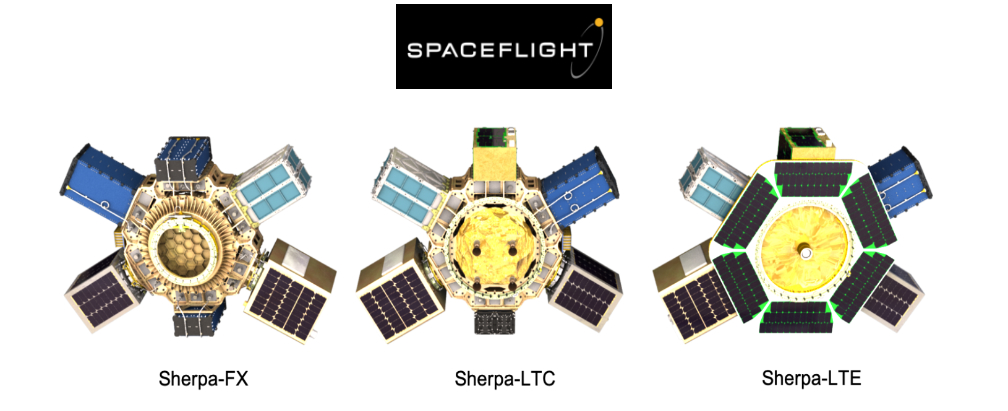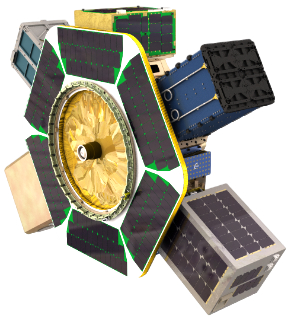
Spaceflight will launch 16 payloads on the upcoming SXRS-3 mission, slated for early 2021. Of the 16 payloads Spaceflight is managing on this launch, 14 of them will launch on Spaceflight’s Sherpa-FX orbital transfer vehicle (OTV). The OTV is Spaceflight’s debut vehicle from its Sherpa-NG (next generation) program. Two of the payloads integrated onto Sherpa-FX are hosted payloads.
Sherpa-FX: “Go Now”

Spaceflight’s Sherpa-FX is the first innovative orbital transfer vehicle to debut in the company’s Sherpa-NG program. The vehicle is capable of executing multiple deployments, providing independent and detailed deployment telemetry, and flexible interfaces, all at a low cost.
Details:
- Flying no earlier than December 2020 (SXRS-3), carrying 14 spacecraft
- 24” ESPA-class deployment system
- Multiple deployments: Separates from a launch vehicle prior to deploying any satellites, with satellite separations initiated by onboard avionics once clear of the launch vehicle
- Hosted payload capable
- Quickly configurable; can move from vehicle-to-vehicle and mission-to-mission
- Independent, world-wide telemetry via GlobalStar
- Uses heritage and commercially available components
- Low cost, flexible aggregation
- On orbit life: 4-7 years
Sherpa-LTC: “Go Fast”

Designed with launch vehicle flexibility as a requirement, the Sherpa-LTC features a high thrust, bi-propellant, green propulsion subsystem integrated seamlessly within the available space of the original free flyer. By including this new propulsion technology from Benchmark Space Systems, Sherpa-LTC provides a low cost, rapid orbital transfer for many sizes of small spacecraft. It’s compatible with all launch vehicles Spaceflight currently works with.
Details:
- Flying: Second half 2021
- Addresses orbit raise and lowering, in-plane phasing and exploration missions
- Features chemical propulsion system via a Benchmark Space Systems
- Hosted payload capable
- Impulsive (fast) maneuvering
- Tuned for SpaceX Starlink and other similar missions – effectively and quickly deploy one or multiple satellites to higher orbits after initial drop off
- Industry-leading price
Sherpa-LTE: “Go Far”

This Electric Propulsion OTV builds on the initial Sherpa program by incorporating a high specific impulse (Isp), Xenon propellant. It incorporates ACE (Apollo Constellation Engine), a low thrust, high efficiency, radiation hardened Hall thruster propulsion system developed by Apollo Fusion, Inc. As ACE systems are able to generate over 6 km/s of delta-V, Sherpa-LTE has the capability to deliver spacecraft to GEO, Cislunar, or Earth-escape orbits. The Sherpa-LTE provides a low-cost alternative to purchasing full direct-inject launch vehicles and extends the ability of small launch vehicles that are currently under development to reach beyond low Earth orbit.
Details:
- Flying: Mid-2021
- Sherpa-LTE addresses LTAN and plane changes
- High dV orbit raise capability, inclination changes or Earth escape
- High Isp, Xenon propellant electric propulsion from Apollo Fusion enables efficient maneuvering needed for orbital angle changes
- Hosted payload capable
- 3X the performance of other market options, including improved flexibility and operational resilience
- Tuned for GTO missions
Executive Comments
“When there are no launches that meet our customers’ exact needs, Spaceflight now will be able to provide more options to achieve their mission objectives,” said Grant Bonin, SVP of business development for Spaceflight Inc. “Our goal is to get our customers’ spacecraft delivered to orbit exactly when and where they want it, all the way to their final destination — that last leg of the journey. Our new Sherpa OTVs enable us to provide that in-space delivery service, while keeping costs low and timelines short.”
“We have a successful track record of developing and deploying spacecraft from in-space vehicles,” added Curt Blake, President and CEO of Spaceflight. “Our first orbital free flyers were on the historic SSO-A mission, which successfully delivered 64 unique spacecraft aboard a Falcon 9 to orbit. We are excited to build on our 10 years of launch experience learnings to develop these new advanced vehicles which will provide even more flexible launch options and customized orbital delivery for our customers.”
Spaceflight works with more than 10 current and future launch vehicles, including Falcon 9, Antares, Electron, Vega, and PSLV, to provide a variety of launch options to its customers. The company has launched more than 300 satellites across nearly 34 rideshare missions. In 2019, the company successfully executed nine missions, the most it’s ever launched in one year, sending more than 50 payloads to space.
